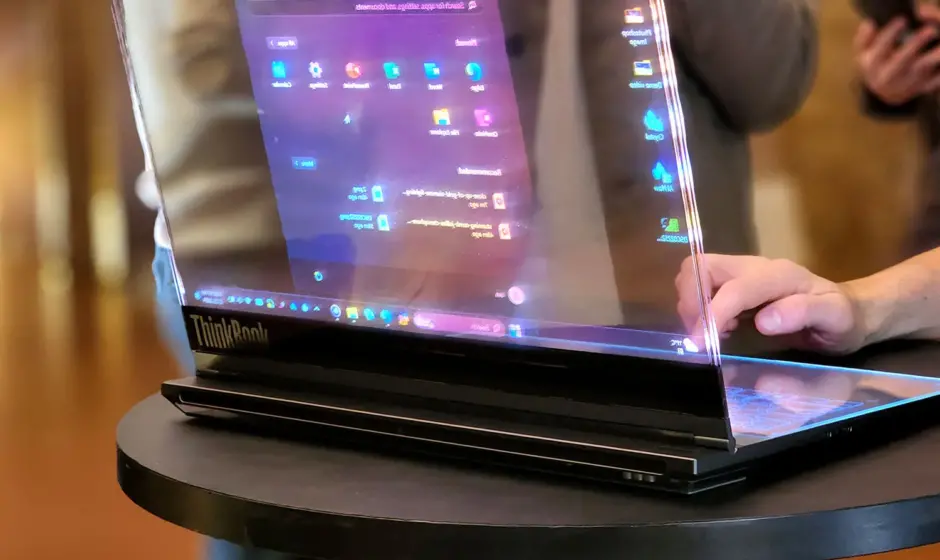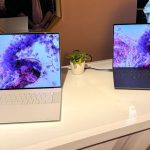Lenovo, known for its active research and development initiatives, made waves last year with its Rollable Laptop Concept and sister device Motorola Rollable Phone, both probably inspired by LG,
This year, Lenovo is coming to MWC 2024 with the ThinkBook Transparent Display Laptop Concept, a notebook equipped with a 17.3-inch translucent display and a digital keyboard.
The ThinkBook Transparent Display Laptop Concept features a 17.3-inch MicroLED display with a resolution of 720p, a 120 Hz refresh rate, and a peak brightness of 1000 nits, delivering vibrant visuals and smooth transitions.


The virtual keyboard, illuminated in one of seven available colors, vanishes when users approach the stylus to the laptop, transforming the entire surface into a drawing board. The ThinkBook Transparent Display Laptop is meant for artists and designers (like me in my former life), but it will not be suitable for heavy keyboard users such as writers or programmers.
The rear-mounted camera enables object recognition and enables various Augmented Reality (AR) applications. Lenovo demonstrated an AI-powered feature where placing a sunflower behind the laptop and text prompts triggered a butterfly animation on the screen. Lenovo envisions users utilizing the transparent display to trace objects placed behind it, turning the laptop into an expensive tracing paper for consumers eager to learn how to draw. The feature allows architects and professional designers to overlay digital designs onto real-world environments, unlocking new avenues for creativity and visualization.

The display can be fully translucent or turn into an opaque white surface when the brightness is pushed to 1000 nits. The laptop functions as a conventional Windows PC in opaque mode, supporting typical tasks like web browsing, image and text file manipulation, and stylus-based drawing. While the overall user experience felt fluid, achieving precise drawings may require adjustments. For instance, I had to close one eye to manage to draw the sunflower’s petals perfectly.
The device’s sleek and elegant design, display quality, and AR functionalities led me to envision, for the second time, the viability of a consumer electronic device featuring a transparent display as a tangible product.
As Lenovo puts it “The technology offers more possibilities in the future with further optimization of image quality, durability, and adjustable transmittance to provide more privacy or more transparency to interact with real-world objects”.




